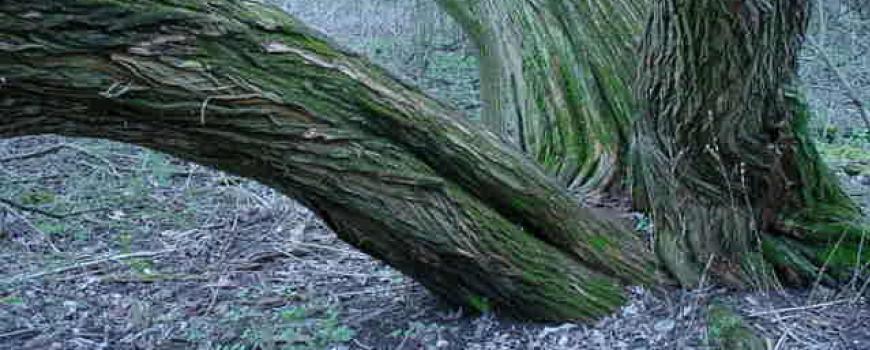The Osage orange (Maclura pomifera) is not native to Ohio – it originated in Texas, Oklahoma and Arkansas. Unlike some non-native species, they do not dominate native species and are not considered “invasive.” They were popular among settlers as hedgerows (you may be familiar with another one of this tree’s common names – the hedge apple). At one time, an estimated 250,000 miles of hedges were constructed with Osage orange trees. The strong yet flexible wood was also preferred by Native Americans for hunting bows.
Take a close look at the bark and roots of the tree. The grayish-green papery growths on its bark are lichens. A lichen is actually two species – a fungus which provides nutrients and an algae which transforms energy from the sun into food via photosynthesis. They are some of the heartiest photosynthetic organisms, growing very slowly but surviving harsh conditions. They can grow on soil and even on rock. In northern areas reindeer moss, which isn’t a moss at all but a lichen, provide are an important food source for caribou.
Many true mosses also make their home here. Mosses are very small, primitive plants which lack vascular (conductive) tissue to move water from roots to the leaves. In fact, mosses don’t even have roots – they absorb water and nutrients directly through their leaves. They are not decomposers, nor can they kill a tree or a lawn. They are capable of holding comparatively large amounts of water within their leaf structure, and provide organic matter to the soil when they die. They often play an important role in ecological succession by providing moisture and shelter for seeds to germinate. Sphagnum mosses cover one percent of earth’s terrestrial surface. Mosses may make their home on trees, fallen logs, soil, rock and even in water. In addition to “reindeer moss,” other plants that despite their common names are not mosses include Spanish moss (a flowering plant in the pineapple family) and club mosses (which have conductive tissue and are more closely related to ferns).





